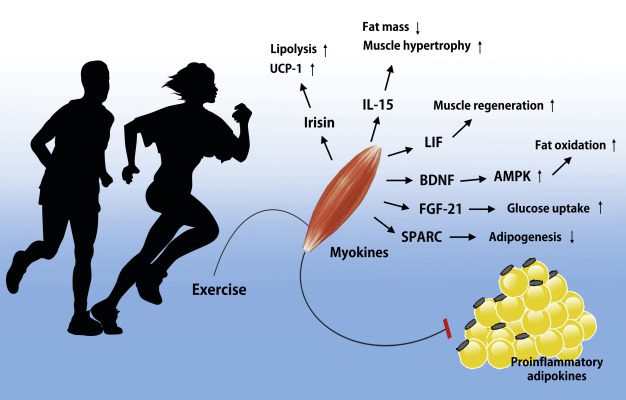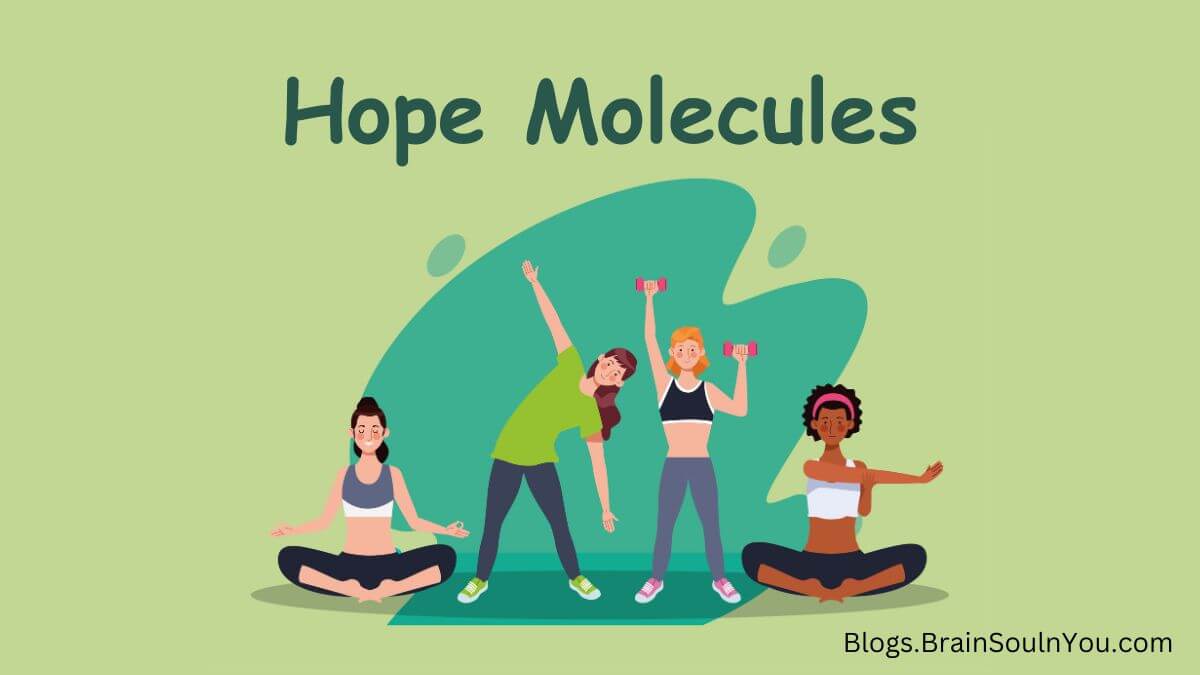Even small amounts of exercise can have a huge impact on your happiness. Why so? This is because of what is called “Hope Molecules”. Exercise and physical activity make our mind and body work better, and more exercise makes us less anxious and depressed. What does it mean?
After a long week of hard work and hassle, people require relaxation, late morning wake-up calls, meeting up with friends partying with them, or wanting to catch up on some series on OTT. Are you too keen to exercise?
I know many people get lazy even discussing exercising. You would think that exercise can also give happiness. And we find it just a compulsion. But remember my point. Even a little exercise can make a big difference in your happiness. Exercise is so important for mental health. The secret to mental health is ‘Hope molecules’.
What does ‘Hope Molecules’ mean?
Science has proven that the more we move, the better off we are. But when health psychologist and author Kelly McGonigal figured out how to articulate exercise in one simple phrase, exercise has the power to heal. So she decided to make it her personal mission to spread the good word.
The phrase that McGonigal understood and found to be the secret to mental health was the “hope molecules”.
The authors McGonigal explained a study that used rats to demonstrate how chronic stress, which can lead to depression, caused the rodents to “lose hope.” But the findings also suggested that “the release of ‘hope molecules’ from the rodents’ skeletal muscles positively affects mood disorder symptoms”, thus helping to build hope and resilience.
Hope molecules, more commonly known by their scientific name myokines, are a way to deliver an intravenous dose of “hope” through exercise, says McGonigal. “Every time we move our body, we are actually supplying our bloodstream with these hope molecules.”
We now know that muscles are like endocrine organs, she explains, and that each organ has the ability to produce chemicals whose function is to communicate with other systems in our bodies. Muscles can do the same. Exercise produces proteins and molecules that can specifically target the immune system, the cardiovascular system, or even the brain—essentially any metabolic system.

“Every time we move our muscles, we are giving ourselves an intravenous dose of hope.”
— Kelly McGonigal, PhD
The Power of Hope Molecules
Scientists have found that whenever we move any muscle in our body, we generate ‘Hope Molecules’.
During movement, proteins called myokines are released into our bloodstream. These pass through the blood-brain barrier to change brain structure and have an antidepressant effect, making us more resilient to stress and trauma.
Exercise in any form and for any length of time improves our lives, you probably already know because the physical benefits of movement have long been documented. It lowers blood pressure and lowers the risk of cancer and diabetes. It helps us age in a healthier way and the list goes on but the benefits are not just physical they are emotional as well.
Exercising makes us happier, it improves our mood and our ability to learn. It also makes us more hopeful yes exercise gives us hope.
Why Exercise is So Good for Mental Health?
When we exercise our muscles contract they secrete chemicals into our bloodstream and make a nice little trip to our brain. These chemicals are often called hope molecules because they literally act as antidepressants. They make us feel good but here’s what we can really preach about when we’re feeling low all we want to do is exercise.
Usually, happen whenever a person feels low he/she wants to do is curl up on the couch and zone out in front of Netflix out but this is what is harming people who use screens all day long. people with low physical activity are twice as likely to be depressed moral of the story low self-esteem.

To make yourself happy you don’t have to be a high-intensity workout even a simple 10-minute walk or short exercise in moderation will also help. Short exercises can be your happy pill.
Research shows that the positive benefits of exercise go beyond the initial rush of feel-good chemicals. Studies suggest that exercise may have a greater long-term effect on depression than medication.
Global Data about Exercise?
Some data indicates that more than a quarter of the world doesn’t get enough exercise and despite all the resolutions we have to say there has been no improvement in global levels of physical activity since 2001.
Different countries exercise differently. So some are doing relatively well. Romania, Russia, Hungary, and India are not far behind. They exercise almost eight hours a week.
There are countries like Italy, Japan, and Brazil and we don’t mean to call anyone out but they spend less than four hours a week exercising. But one in three people in Japan don’t exercise at all, it wouldn’t be too surprising if many of us can relate to that statement, but here’s something as hard as inertia before exercise is completely out of whack.
What is the Scientific Name for the Hope Molecules?
Hope molecules, more commonly known by their scientific name, myokines, are a way to give yourself an intravenous dose of “hope” through exercise.
When muscles contract, they release chemicals into the bloodstream. Among these chemicals are myokines, which have been referred to as “hope molecules”. These small proteins travel to the brain, cross the blood-brain barrier and act as an antidepressant.
Myokines potentially provide beneficial metabolic effects during the crosstalk between skeletal muscle and liver and between skeletal muscle and adipose tissue. Additionally, several studies have shown that exercise-induced myokines have positive effects on glucose uptake, glucose tolerance, regulation of fat oxidation, and satellite cell proliferation.
Myokines, as one of many health factors, are an important area of research in metabolic diseases. This review summarizes the potential positive effects of exercise-induced myokines, such as IL-15, brain-derived neurotrophic factor (BDNF), leukemia inhibitory factor (LIF), irisin, fibroblast growth factor and secreted proteins acidic and cysteine-rich. ( Spark), On metabolic diseases.

Are hope molecules a Real Thing?
Have you heard of “Hope Molecules”? These are real, living molecules that are in our body and they are released when we exercise, especially when our muscles contract. You’ve probably heard of ‘runner’s high’ and chemicals like Serotonin, Dopamine, Oxytocin, and Endorphins, all of which contribute to that delicious post-workout bliss.
You probably already know that exercise is good for overall health and contributes to better sleep, and now you know about the power of hope molecules, too. But maybe you need some more explanation. They are called myokines, and they are the subject of a great deal of research.
I think the best way to believe anything is to experience it yourself. If you are going through any mental trauma, or remain stressed, then start doing a workout for some time from today and feel its results yourself. If you feel good then share it with other people too.
It’s never too late to start.
Today is the beginning of the rest of your life. Can you commit to one small step? If you break the habit or there is a time when you can’t exercise, just start again.
Where is Hope in the Brain?
In the brain, people experience optimism about the future in two key areas: the amygdala, our emotion processing center, and part of an area called the anterior cingulate cortex, which is involved in thinking about the self, reflecting on the past, and involved in predicting the future. The future, especially with an emotional lens.
What are the Happiest Molecules?
Serotonin, Dopamine, Oxytocin, and Endorphins are well-known happy hormones that promote positive feelings like happiness, joy, and even love.
Start with Small
You read this article carefully, now I would advise you to start small. One of the hardest things is just getting started. Setting goals that are too high makes us more likely to feel like we are failing. Ask yourself, “What is the next best course of action?” Think small for now. Running is a good place to start because it doesn’t require huge leaps, and has the added benefit of being outside in nature.
You can exhaust yourself before you even start by imagining how far away the finish line is. Just take one step, then another.
“Small steps have no competition in personal development — their unflinching effectiveness embarrasses every other strategy.”
— Stephen Guise
Frequently Asked Questions (FAQs)
Q1: What are “Hope Molecules” in the context of exercise?
“Hope Molecules,” scientifically known as myokines, are proteins released during exercise. These molecules have an antidepressant effect, positively impacting mood and resilience to stress and trauma.
Q2: How does exercise contribute to mental health through “Hope Molecules”?
When muscles contract during exercise, myokines are released into the bloodstream. These myokines cross the blood-brain barrier, affecting brain structure and acting as antidepressants, ultimately promoting mental well-being.
Q3: What is the scientific significance of myokines?
Myokines are proteins released by muscles during exercise. They play a crucial role in metabolic processes, influencing glucose uptake, glucose tolerance, fat oxidation regulation, and satellite cell proliferation.
Q4: Is the term “Hope Molecules” a real scientific concept?
Yes, “Hope Molecules” is a term used to describe myokines, which are scientifically recognized proteins released during exercise with antidepressant effects.
Q5: What are the key benefits of exercise for mental health?
Exercise contributes to improved mood, increased resilience to stress, and potential long-term effects on depression. It also enhances cognitive function, making individuals happier and more hopeful.
Q6: Can short exercises have a positive impact on mental health?
Yes, even short exercises, like a 10-minute walk or brief workout, can release “Hope Molecules” and contribute to improved mental well-being. Short exercises can serve as a “happy pill.”
Q7: How does exercise affect the release of feel-good chemicals in the brain?
Exercise induces the release of chemicals like Serotonin, Dopamine, Oxytocin, and Endorphins—commonly known as happy hormones. These chemicals contribute to the post-workout bliss or “runner’s high.”
Q8: Does exercise have a global impact on physical activity levels?
Despite resolutions, global levels of physical activity have not improved since 2001. Different countries exhibit varying exercise habits, with some spending more time on physical activity than others.
Q9: What are the key areas in the brain associated with optimism about the future?
The amygdala, responsible for emotion processing, and the anterior cingulate cortex, involved in self-reflection and predicting the future, are key areas in the brain associated with optimism about the future.
Q10: How can individuals start incorporating exercise into their routine?
Starting small is key. Set achievable goals and focus on the next best course of action. Running is a good starting point, and even short exercises can make a significant difference in overall well-being.
Read more blogs on The Benefits of Yoga | Yoga Benefits for Mental Health | The Power of Proper Breathing | How to Stop being tired all the Time? | 10-Minute Meditation for Beginners – Best Meditation Tips | Lose Weight in 2 Weeks
Love,
Saurabh Goel
Saurabh Goel
Saurabh Goel is the Founder and CEO of the Training and Counselling Company Brain Soul & You’. He is an NLP Wellness Coach, Life Coach, Brain analyst, and Trainer for Education, Corporate, and Entrepreneurship. For more than 5 years, he delivered presentations on entrepreneurship, mind programming, and motivation. He did his B.tech in IT and later choose to be a successful psychologist.
#Daily Exercises | #Hope Molecules | #Daily Routine | #Morning Routine | #Trending blogs | Latest blogs | #Secret to Mental Health #Mental Health


